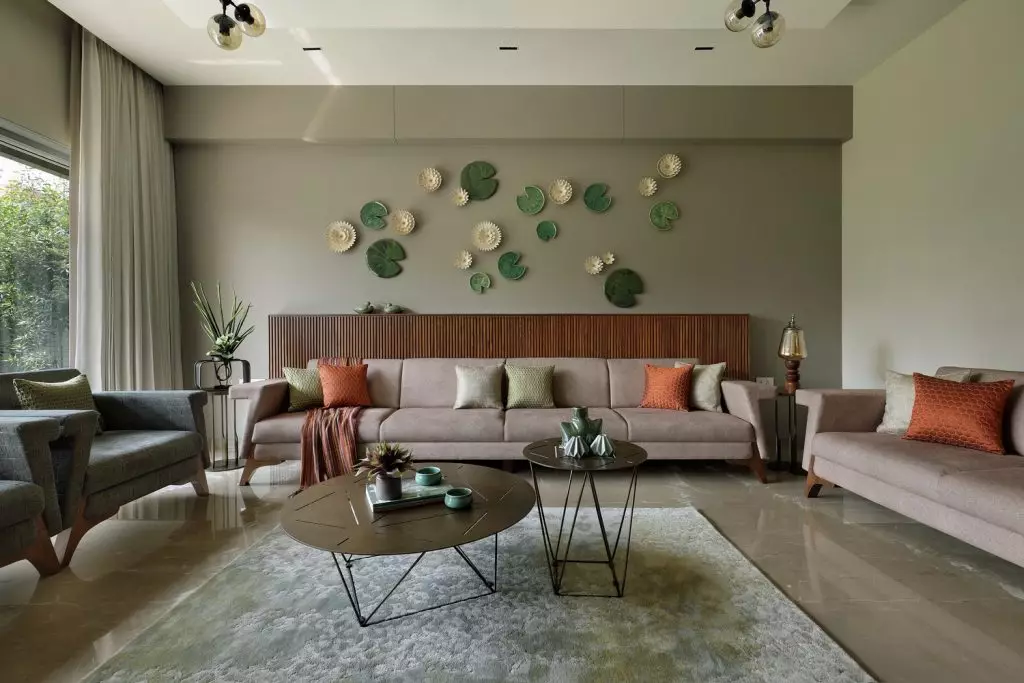Introduction
Interior design is a complex and creative field that involves more than just arranging furniture or choosing a color scheme. It’s an art form that integrates various elements to create a harmonious and aesthetically pleasing environment. One of the fundamental aspects of interior design is “form,” a concept that significantly impacts the overall look and feel of a space. But what exactly is form in interior design, and how does it contribute to the creation of beautiful and functional interiors? This article explores the concept of form in interior design, its types, and its importance in achieving a balanced and cohesive design.
Understanding Form in Interior Design
Form refers to the shape, structure, and configuration of objects within a space. It is one of the seven elements of interior design, along with space, line, texture, pattern, color, and light. Form is essentially the three-dimensional outline of an object, defining its physical structure. In interior design, forms can be categorized into two main types: geometric and organic.
- Geometric Forms: These are man-made forms that have a clear, defined shape, often characterized by sharp edges and angles. Examples of geometric forms include furniture like rectangular tables, square cushions, or cylindrical vases. These forms are often associated with a sense of order and stability in a room.
- Organic Forms: In contrast, organic forms are more natural, irregular, and often asymmetrical. These forms mimic the shapes found in nature, such as the curves of a river or the irregular shape of a leaf. Organic forms bring a sense of flow, softness, and comfort to a space, making it feel more inviting and less rigid.
The Role of Form in Interior Design
Form plays a crucial role in determining the overall aesthetic of a room. It influences how a space is perceived and experienced by its occupants. Here’s how form impacts interior design:
Creating Balance and Harmony: A well-designed interior balances various forms to create a cohesive look. For instance, combining geometric and organic forms can add visual interest and prevent a space from feeling too monotonous. Using too many geometric forms can make a room feel cold and rigid, while an excess of organic forms might make it appear chaotic. Achieving a balance between the two ensures that the space feels harmonious and pleasing to the eye.
Enhancing Functionality: Form is not just about aesthetics; it also impacts the functionality of a space. The form of furniture and decor must align with the intended use of the space. For example, in a living room, the form of seating arrangements should facilitate conversation and relaxation, while in a kitchen, the form of cabinets and countertops should optimize workflow and storage.
Defining the Style: The forms used in a space often define its design style. Modern and contemporary designs typically feature clean, geometric forms with minimal decoration, emphasizing simplicity and functionality. In contrast, traditional or rustic designs might incorporate more organic forms, with furniture and decor that have curved lines and intricate details, creating a warm and inviting atmosphere.
Guiding the Eye: Form also plays a role in guiding the viewer’s eye through a space. Designers use forms to create focal points, direct attention, and lead the viewer through a room. For instance, a large, uniquely shaped piece of furniture or an eye-catching decor item can serve as a focal point, drawing the eye and anchoring the space.
Types of Forms in Interior Design
Forms in interior design can also be classified into two categories: positive and negative forms.
- Positive Forms: These are the objects that occupy space, such as furniture, decor, and architectural elements like columns or beams. Positive forms are the tangible elements that contribute to the design.
- Negative Forms: Negative forms refer to the empty spaces around and between positive forms. In interior design, negative space is just as important as positive space, as it allows a room to breathe and prevents it from feeling cluttered. A well-designed space balances positive and negative forms to create a comfortable and visually appealing environment.
Form and Scale in Interior Design
Scale is another important consideration when working with forms. Scale refers to the size of an object in relation to the space it occupies. When selecting forms for a room, it’s essential to consider the scale to ensure that the forms are proportional to the space. For example, a large, bulky sofa might overwhelm a small living room, while delicate, small furniture could get lost in a large, open space. Properly scaled forms contribute to the overall balance and harmony of a room.
Conclusion
Form is a foundational element of interior design that significantly influences the overall aesthetic and functionality of a space. By understanding the different types of forms—geometric and organic, positive and negative—designers can create interiors that are not only visually appealing but also functional and comfortable. The careful balance of form, along with considerations of scale and harmony, is key to achieving a cohesive and well-designed space. Whether you’re designing a home, an office, or a public space, paying attention to form will help you create environments that are both beautiful and functional, enhancing the experience of those who inhabit them.

